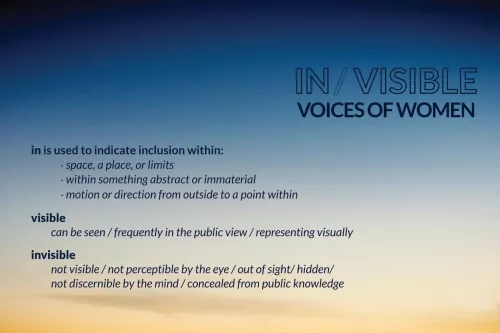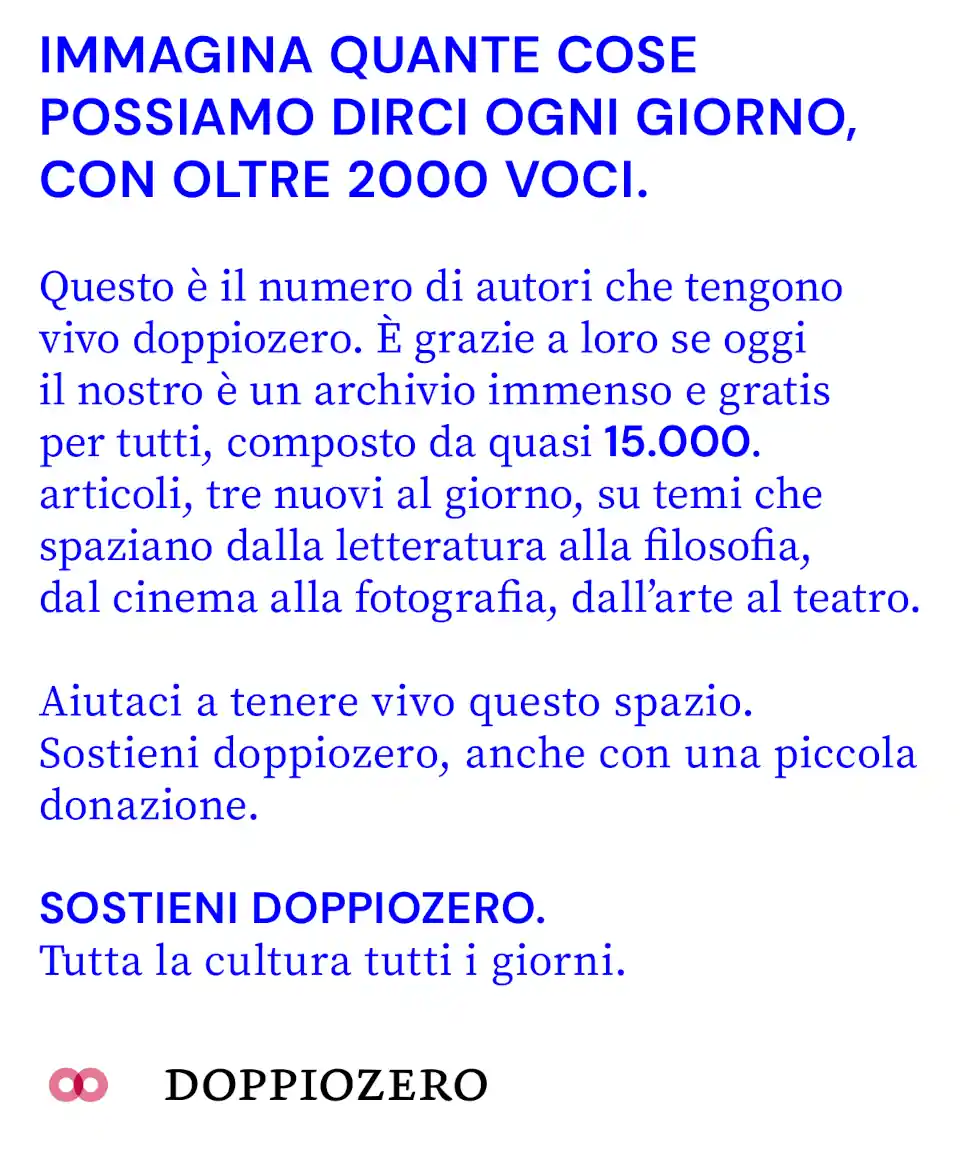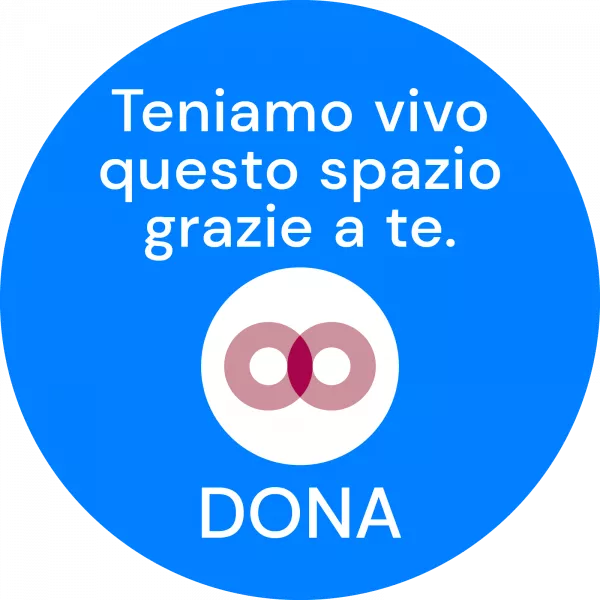Speciale
A poetic voice of the female cultural practitioners / In/Visible Voices of Women
![]()
Meritocracy within the art world, however idealised, has not yet materialised. The marginalisation of voices such as of women artists is a global reality, and the African context is no exception.
The forces excluding women’s voices are complex and varied. Stemming from language-bias to socio-economic inequalities, from cultural stigmas, misogyny, gender-prejudice, centre/periphery dialectics and more.
Additionally, at a moment in time where the African continent’s economies are earmarked for poverty eradication and global economic development, the forced invisibility and bias against voices that notwithstanding, are expected to provide their minds, and bodies for the societal good is problematic. Where are women’s voices, and their expression within public life?
In 2016, Another Africa launches the ongoing series ‘In/Visible Voices of Women’, conceived by Clelia Coussonnet and Missla Libsekal. It looks to women practitioners, to explore through their poetic voices what is particular to this epoch. Rather than imposing a rubric and aiming to disrupt labels, the series begins with the notion of being ‘in/visible’, and paves the way for these cultural practitioners’ voices to determine the message while contributing to the existing corpus of material on women artists. In so doing, and through their practice and engagements, we probe the possibility that what rises to the surface, is indeed some of the most urgent and pertinent questions of our contemporary condition.
The artist interview series launching spring 2016 include practitioners engaged and connected to Francophone North Africa.
lettera27 and Why Africa? is happy to be partner with Another Africa on re-publishing the series. Below is the first article on the topic.
What are the most pressing issues facing women, and women practitioners today?
Written by Another Africa on Mar 07, 2016 in Art & Culture, Interviews · 0 Comments
What is holding back the agency of women today? Can we name the forces erasing or hampering women’s full participation in public life. However complex or varied the issues at hand may be, there is an urgency to reclaim spaces, address our histories differently, and open up dimensions.
We asked 11 phenomenal women – intrepid academics, artists, writers, and curators – to join us for the 6-part Commentary Series of the ‘In/Visible Voices of Women’ project. By fleshing out a diverse terrain of thoughts and opinions, they name some of the most pressing concerns faced by women at large, and the states of being invisible, and becoming visible come to light.
What are the most pressing issues facing women, and female practitioners today?
Malala Andrialavidrazana
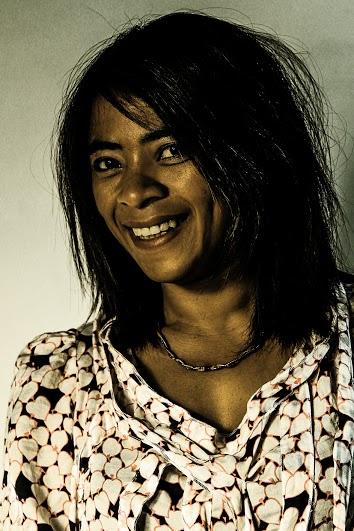
Malala Andrialavidrazana.
Women’s conditions vary considerably from one social structure to another; it would be indecent to place drama and suffering such as physical abuse, on par with struggles against discrimination in the professional field.
However, each of these situations reveals contempt, scarcity of recognition, and the lack of rights characterising archaic behaviours that women still face. Besides, even a mere look at gender stereotypes around women in the media, is enough to understand that our contemporaries’ eyes continue to feed on retrograde prejudices.
Inevitably, the persistence of these representations, lets so much arrogance pass into the admitted banalities of everyday life without ever provoking any questions. Not of the subservient structures, nor of the lack of will to reform these systems that protect potential predators.
Similarly, several forms of harassment remain silenced. Perhaps this is due to feeling chagrined,
or for lacking support, or even feeling fearful to jeopardise an environment that was always endangered from the start.
However, given the scale of male dominance, women must take charge of reducing the inequality, violence, injustices and insecurities they experience. Despite the lack of policy framework in the artistic sector (as in any other field), they should keep on being determined to get the legitimacy of their work recognised, and to access a status in accordance with their talents or skills.
It is by keeping in mind that they must first fight to improve their own environment, and following that, they will be able to free themselves and move forward serenely in both the professional, and private sphere.
Malala Andrialavidrazana is a visual artist with a background in architecture. She is interested in notions of frontiers and interactions within cross-cultural contexts. Primarily through photography, she digs behind scenes in a succession of back and forth between private spaces and global issues to explore social imaginaries. She invents a language whose approach is resolutely turned towards History but whose engagement in the City remains active. In her collection of visuals, examining the in-between space in a multitude of heres and nows, she proposes an open frame where borders do not exist.
Angèle Etoundi Essamba
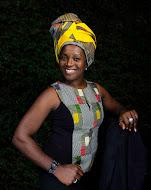
Angèle Etoundi Essamba, ph Daouda Timera.
Women still face many challenges related to gender, and often have to reconsider their own ambitions. The pressing issues today, relate to education and job opportunities. Women also face issues regarding violence and healthcare. In Africa specifically, the culture and social pressures (getting married, having a family) are significant barriers for women practitioners.
Angèle Etoundi Essamba (b. Cameroon, raised in France) graduated from the Photo Academy of Amsterdam where she lives. Since her first exhibition in 1985 in Amsterdam, her work continues to be exhibited in museums, institutions, art fairs, biennales and galleries in Africa, Europe, the United States, Latin America, Arab Emirates and Asia. Essamba’s work lies at the intersection of the social/gender and the artistic field. She joins the spirit of humanistic photography with a strong attachment to the values of communion. She is a committed artist involved in a reflection on the identity of the African woman. Keywords for Essamba’s work are: pride, strength and awareness.
N’Goné Fall
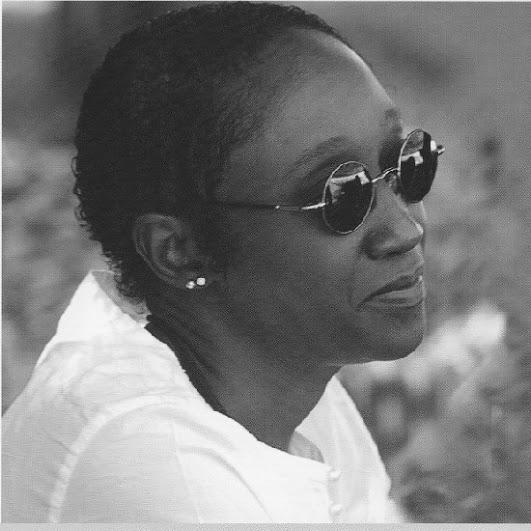
Ngone Fall.
Visibility. In Africa, many of them stop practicing when they get married or have a child. It is as if it is impossible to be an artist, plus a wife, and a mother. In some countries, the social pressure is very high and women have to choose.
Opportunity. Female artists still have fewer opportunities (exhibition, residency, lecture, publication).
Perception. In some African countries, female artists are expected to produce decorative art (beauty) and the African audience gets confused if their work is too conceptual and/or minimalist. Western audiences (and to some extent Western art professionals) expect them to mainly explore women’s issues. The challenge is to break the cliché.
Freedom. Because of all this, it is not easy for female artists. Quite often, they have to justify what they do and why, they have to answer ridiculous questions no one would dare ask a male artist.
N’Goné Fall graduated with distinction from the École Spéciale d’Architecture in Paris. She is an independent curator, essayist and a consultant in cultural policies. She has been the editorial director of the Paris-based contemporary African art magazine Revue Noire from 1994 to 2001. Fall has edited books on contemporary visual arts and photography and curated exhibitions in Africa, Europe and the USA. She was a guest curator of the African photography encounters in Bamako in 2001 and the Dakar contemporary art biennial in 2002. As a consultant in cultural policies she is the author of strategic plans, orientation programmes and evaluation reports for national and international cultural institutions and art foundations. Fall has been an associate professor at the Senghor University in Alexandria, Egypt (master department of creative industries) from 2007 to 2011. She is a founding member of the Dakar-based collective GawLab, a platform for research and production on art in public spaces and technology applied to artistic creativity.
Tamar Garb
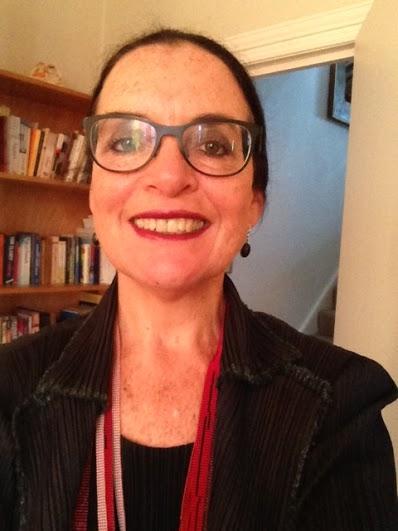
Tamar Garb.
Visibility and audibility remain the most important challenges. We are still faced with countless public platforms and forums where women are invisible. I have been very encouraged by the Finnish feminist online initiative to ‘out’ ‘men only panels’ and to name and shame the participants. Let us do the same for exhibitions. I would start with the recent ‘Beauté Congo’ show at the Fondation Cartier in Paris, which would lead you to believe that women in the Congo have only ever existed for breasts and booty, designed to titillate and stimulate a heteronormative sexual economy.
The absence of female producers is accompanied by the hypervisibility of women as sex objects, cyphers, allegories and phantasmatic projections. This version of history is produced by the questions
posed and the inevitability (and predictability) of the justifications: there were no women ‘good enough’, ‘important enough’ or ‘visible enough’ to be included. If that is the case (and it is debatable) then the question is the wrong one. An expanded/ self-critical look at the questions we pose can counter canonical teleologies and masked self-interest.
For me, the pressing issues facing artists, critics, writers and curators now is to address our histories differently so that the voices of women are no longer silenced, the archives are reconstituted to give space to women’s agency, and the way we ask questions of our history provides a space for a more inclusive embrace of what is out there, not only in the past, but today.
Tamar Garb is an art historian and curator. She is Professor of Art History at University College London and was curator of ‘Figures and Fictions, Contemporary South African Photography’, (V&A 2011) and ‘Distance and Desire: Encounters with the African Archive’ (Walther Collection, Ulm, New York, Berlin 2013.14). Amongst her publications are ‘The Painted Face: Portraits of Women in France 1814-1914 (YUP 2008) and ‘The Body in Time’ (Washington 2008).
Euridice Getulio Kala
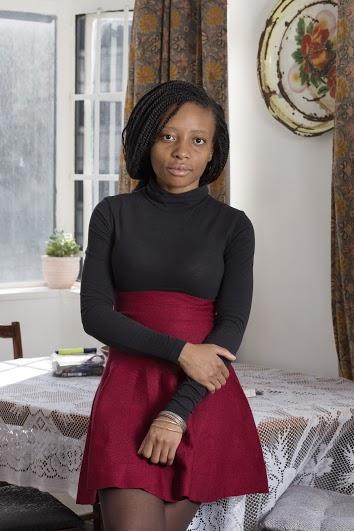
Euridice Kala.
The Renaissance of the Black Woman, objectification and the Super (Uber) Woman
From Sarah Baartman to Lupita Nyong’o the black woman has suffered throughout the ages a violent, and somewhat reductive representation in visual language. She has been portrayed mainly as an object of desire, of repulsion and somewhat for suppression(s). To research my answers, I have been watching lesbian porn, and have realised how much these “under-produced” movies connect to the above-mentioned articulation of the black body. The black woman as the an ‘over woman’ and ‘uberwoman’ characterises the what and why – it is that so many black women’s voices have not featured in history from an author’s perspective, but rather from a subject-object position.
The black woman in particular, has not yet begun to author her narratives, as there is so much to demystify, which may also prevent her from doing so. This perhaps is an issue, or a hurdle to go over or under. I would like to actually suggest a complete bypass of the current exercise that women have to undergo to exist and practice today.
And through this bypass, forge a nihilistic language about herself that does not relate with the stereotypes by which the black [woman’s] body is represented, and acquires a new ubiquitous direction by resolving to participate in the conversation away from the victim role. In accepting the power, which in an abstract manner is attributed to the black woman, and by doing so moves towards a world where the manifestations of her actions have a completely new, and formulated language.
It is necessary to point out that a woman’s primary function was or is to open dimensions. Eve in this case was the curious one; she was the adventurer, the original rule breaker.
*Uberman/ Uberwoman may refer to Übermensch, Friedrich Nietzsche’s Superman/ Superman. Over Woman is my proposed higher female character who acknowledges her past features through a systematic bypassing of types that have been able progress through the struggle.
Euridice Getulio Kala (b. Maputo, Mozambique, 1987) is an artist currently based in Maputo, who’s interested in historical cultural metamorphoses, manipulations and adaptation across the period running between the late 1400s and the early 1900s, converging most times with the contemporary context. Kala employs her personal narratives and further delves into her interests, which includes her life in Johannesburg, having been a married woman and being feminist. She works with various media to achieve the finality of her ideas, from performance, video, sculptural-lyrics, installations and photography. Kala was trained as a photographer, and has shown her work in South Africa, Maputo, Amsterdam, Dakar (Off), Apt, Lisbon, Douala and been awarded residencies, both on the continent and internationally.
Con il supporto di 
